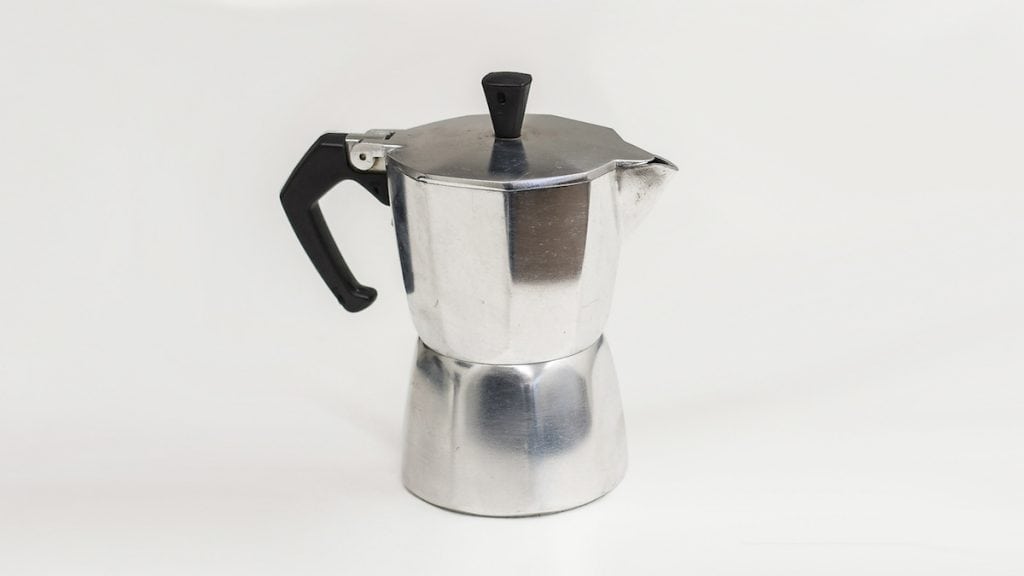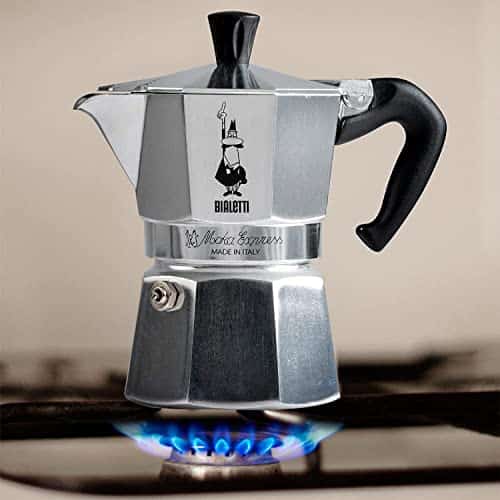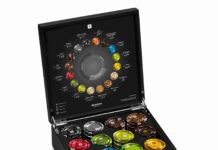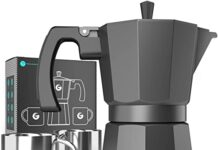Ah, the tantalizing scent of freshly brewed coffee wafting through the air is enough to bring a smile to anyone’s face. But what if, despite your carefully measured portions and perfectly timed brew, your beloved Bialetti coffee still tastes burnt? Frustrating, isn’t it? Well, fear not, dear coffee enthusiast, for we are here to uncover the mysterious reason behind this unwelcome flavor and help you achieve that perfect cup of joe you crave. So sit back, grab your favorite mug, and prepare to embark on a journey to coffee nirvana as we unravel the secrets of why your Bialetti coffee might just be tasting burnt.
This image is property of assets.epicurious.com.
1. Overheating the Stovetop Espresso Maker
When it comes to using a stovetop espresso maker, there are a few key things to keep in mind to avoid your coffee tasting burnt. One of the main culprits is overheating the espresso maker. Let’s break it down into three common mistakes that can lead to your coffee having a burnt taste.
1.1 Using high heat
Using high heat is one of the most common mistakes that people make when using a stovetop espresso maker. By cranking up the heat too high, you risk scorching the coffee grounds and causing them to release bitter compounds. This can result in a burnt taste in your coffee. It’s important to remember that the stovetop espresso maker works best with gentle heat, allowing for a gradual extraction process.
1.2 Leaving it on the stove for too long
Another mistake that can lead to burnt-tasting coffee is leaving the stovetop espresso maker on the stove for too long. When the coffee stays on heat for an extended period, it can over-extract, resulting in a bitter and burnt flavor. It’s best to remove the espresso maker from the heat as soon as the brewing process is complete to prevent over-extraction and maintain the delicate balance of flavors.
1.3 Using a damaged or old Bialetti
Using a damaged or old Bialetti can also contribute to a burnt taste in your coffee. Over time, the rubber gasket and filter plate can wear out, which can lead to improper sealing and lower brewing temperatures. This can cause the coffee to spend too much time on the heat, resulting in a burnt flavor. It’s essential to regularly inspect and replace any worn-out parts to ensure optimal brewing conditions and a delicious cup of coffee.
2. Incorrect Grind Size
The grind size of your coffee beans plays a vital role in the overall taste of your stovetop espresso. Using the wrong grind size can make your coffee taste burnt. Let’s explore the different aspects of grind size that can affect the flavor.
2.1 Using a fine grind
Using a fine grind in your stovetop espresso maker can lead to over-extraction and a burnt taste. Finely ground coffee has a larger surface area, making it easier for the water to extract the coffee solids quickly. When the extraction process occurs too rapidly, it can result in bitter and burnt flavors. It’s best to use a medium to medium-fine grind when brewing with a stovetop espresso maker to achieve a well-balanced and flavorful cup.
2.2 Using a coarse grind
On the other hand, using a coarse grind can also impact the taste of your coffee when using a stovetop espresso maker. A coarse grind may not allow for sufficient extraction within the brewing timeframe, resulting in a weak and underwhelming cup of coffee. While it may not necessarily taste burnt, it can lack the robust flavors that the stovetop espresso maker is known for. Aim for a medium to medium-fine grind to strike the right balance.
2.3 Inconsistent grind size
Inconsistent grind size can be another factor contributing to a burnt taste. Having a mix of fine and coarse particles can lead to uneven extraction, with some parts of the coffee over-extracting and others under-extracting. This imbalance can result in a bitter and burnt flavor profile. It’s essential to invest in a quality burr grinder to ensure consistent grind size for a more predictable and enjoyable brewing experience.
3. Over-Extraction
Over-extraction is a common issue that can lead to a burnt taste in your coffee. Let’s explore the different factors that can cause over-extraction with a stovetop espresso maker.
3.1 Brewing for too long
Brewing your coffee for too long can lead to over-extraction, resulting in a bitter and burnt flavor. The stovetop espresso maker is designed for a relatively short brewing time, typically 4-5 minutes. Leaving the coffee on the heat for an extended period can cause the water to extract more compounds, including those that contribute to bitterness. It’s crucial to pay attention to the brewing time and remove the espresso maker from the heat promptly.
3.2 Using too much coffee
Using too much coffee in your stovetop espresso maker can also contribute to over-extraction. When there is an excessive amount of coffee relative to the water, the resulting brew can become overly concentrated and bitter. It’s important to follow the recommended coffee-to-water ratio for your stovetop espresso maker to achieve a well-balanced flavor profile.
3.3 Using the wrong coffee-to-water ratio
In addition to using too much coffee, using an imbalanced coffee-to-water ratio can also lead to over-extraction and a burnt taste. If there is too little water relative to the coffee, the extraction process can become too intense, resulting in bitterness. On the other hand, using too much water can lead to under-extraction and a weaker flavor profile. It’s crucial to find the right balance and follow the manufacturer’s instructions or experiment to achieve your desired taste.
4. Low-Quality Coffee
The quality of the coffee you use significantly impacts the taste of your stovetop espresso. Using low-quality coffee beans or old and stale coffee can result in a burnt flavor. Let’s dive into the specific factors related to coffee quality that may contribute to a burnt taste.
4.1 Using old or stale coffee
Using old or stale coffee can result in a burnt taste in your cup. Over time, coffee beans can lose their natural oils and aromatic compounds, leading to a less pleasant flavor profile. Stale coffee can also be more susceptible to over-extraction during brewing, resulting in bitterness and burnt flavors. It’s best to use freshly roasted coffee beans and grind them just before brewing to fully enjoy the flavors and aromas.
4.2 Low-quality coffee beans
The quality of the coffee beans you use also plays a significant role in the taste of your stovetop espresso. Using low-quality beans can result in a lack of complexity and depth, potentially leading to a burnt flavor. It’s recommended to choose high-quality, specialty coffee beans that have been carefully sourced and roasted. These beans tend to offer a more nuanced and enjoyable flavor experience when brewed with a stovetop espresso maker.
This image is property of cdn.shopify.com.
5. Water Quality
The quality of the water you use for brewing your stovetop espresso can impact the taste of your coffee. Let’s explore the different aspects of water quality that can contribute to a burnt flavor.
5.1 Using hard water
Using hard water, which contains high levels of minerals such as calcium and magnesium, can lead to a burnt taste in your coffee. The minerals in hard water can interact with the coffee compounds and result in a harsh and unpleasant flavor profile. It’s advisable to use filtered or bottled water to minimize the mineral content and ensure a cleaner taste in your brewed coffee.
5.2 Using water with impurities
Water impurities such as chlorine or other contaminants can also affect the taste of your stovetop espresso. These impurities can introduce off-flavors and contribute to a burnt or unpleasant taste profile. Using filtered water or running tap water through a water filtration system can help remove any impurities and improve the overall quality of your brewed coffee.
5.3 Not heating the water to the right temperature
Heating the water to the correct temperature is crucial for achieving optimal extraction and preventing a burnt taste. If the water is not hot enough, it can lead to under-extraction, resulting in a weak and flavorless cup. On the other hand, using water that is too hot can cause over-extraction and bitterness. The ideal water temperature for brewing with a stovetop espresso maker is usually around 195-205°F (90-96°C). Using a thermometer or following the manufacturer’s instructions can help ensure you’re using water at the correct temperature.
6. Improper Bialetti Maintenance
Proper maintenance of your Bialetti stovetop espresso maker is essential for consistently great-tasting coffee. Neglecting maintenance can contribute to a burnt taste. Let’s explore the different aspects of Bialetti maintenance that are crucial for avoiding a burnt flavor.
6.1 Mineral buildup in the coffee maker
Over time, minerals from the water and coffee can accumulate in your Bialetti stovetop espresso maker, resulting in unwanted flavors and potentially burnt-tasting coffee. Regularly cleaning and descaling your Bialetti can help prevent mineral buildup and ensure that your coffee always tastes fresh and delicious. Follow the manufacturer’s instructions for cleaning and descaling, and consider using specialized descaling solutions for more effective results.
6.2 Not cleaning the Bialetti properly
Improper cleaning of your Bialetti can also contribute to a burnt taste in your coffee. Residual coffee oils and particles can accumulate inside the brewer, leading to rancidity and off-flavors. It’s important to disassemble the Bialetti after each use, rinse it thoroughly, and clean it with mild dish soap to remove any residues. Pay special attention to the rubber gasket and filter plate, as these can trap particles and oils. Regular cleaning will help maintain the integrity of your stovetop espresso maker and ensure a clean and flavorful brew.
This image is property of www.bialetti.com.
7. Brewing Technique
The technique you use during the brewing process can significantly impact the taste of your stovetop espresso. Let’s explore two key aspects of brewing technique that can lead to a burnt flavor.
7.1 Tamping the coffee grounds too tightly
Tamping, or applying pressure when filling the coffee grounds basket, is an important step in the brewing process. However, tamping too tightly can hinder water flow during extraction, leading to uneven extraction and potential burnt flavors. It’s best to tamp the coffee grounds gently and evenly without exerting excessive force to ensure a consistent and balanced extraction.
7.2 Not preheating the Bialetti
Preheating your Bialetti stovetop espresso maker is an essential step in achieving optimal extraction and preventing a burnt taste. By preheating, you ensure that the brewer is at the right temperature when the coffee is introduced, leading to a more even extraction. Simply fill the bottom chamber with hot water and let it sit for a minute before proceeding with the brewing process. This simple step can make a significant difference in the taste of your coffee.
8. Storing Coffee Incorrectly
Proper storage of your coffee is essential for preserving its freshness and flavor. Incorrect storage can contribute to a burnt taste in your cup. Let’s explore two key aspects of coffee storage that can impact the taste.
8.1 Exposure to air and moisture
Exposure to air and moisture is one of the main culprits behind the deterioration of coffee flavor. When coffee beans are exposed to air and moisture, they can become stale and develop off-flavors, including a burnt taste. It’s important to store your coffee in an airtight container, preferably with a one-way valve that allows carbon dioxide to escape without letting oxygen in. This will help preserve the freshness and flavor of your coffee.
8.2 Improper storage temperature
Temperature also plays a significant role in coffee storage. When coffee is exposed to high temperatures, it can lose its flavor more rapidly, potentially leading to a burnt taste. It’s best to store your coffee in a cool and dry place, away from direct sunlight and heat sources. Avoid storing coffee beans in the refrigerator or freezer, as the constant temperature fluctuations can impact the overall flavor and aroma.
This image is property of europeancoffeetrip.com.
9. Overuse of Bialetti
Using your Bialetti stovetop espresso maker excessively can also lead to a burnt taste in your coffee. Let’s explore the potential consequences of overusing your espresso maker.
9.1 Using the stovetop espresso maker excessively
Frequent and consecutive use of the stovetop espresso maker without allowing it to cool down can result in the coffee tasting burnt. The prolonged exposure to heat can cause the brewing process to become less controlled, leading to potential over-extraction and bitterness. It’s important to allow your Bialetti to cool down between brewing sessions to maintain optimal extraction and prevent a burnt flavor in your coffee.
10. Personal Preference
Last but not least, it’s essential to recognize that personal preference plays a significant role in how we perceive the taste of coffee. Each individual may have different taste preferences, and what one person perceives as burnt, another may find perfectly enjoyable. It’s important to experiment with different brewing parameters, such as water temperature, brewing time, and coffee-to-water ratio, to find the combination that best suits your tastes. Remember that there is no one-size-fits-all approach when it comes to coffee, and embracing your personal preferences is key to enjoying your cup of Bialetti coffee to the fullest.
In conclusion, there are several factors that can contribute to a burnt taste in your Bialetti coffee. From overheating the stovetop espresso maker to using the wrong grind size, over-extracting the coffee, or using low-quality beans and water, each element has an impact on the final flavor. Additionally, improper Bialetti maintenance, brewing technique, storage, and overuse can also play a role in the burnt taste. By understanding these factors and making adjustments accordingly, you can ensure that your Bialetti coffee tastes delightful every time. Remember, coffee brewing is an art, and finding the perfect balance is a journey that allows you to savor the unique flavors and aromas that the stovetop espresso maker can deliver.
This image is property of vader-prod.s3.amazonaws.com.










































